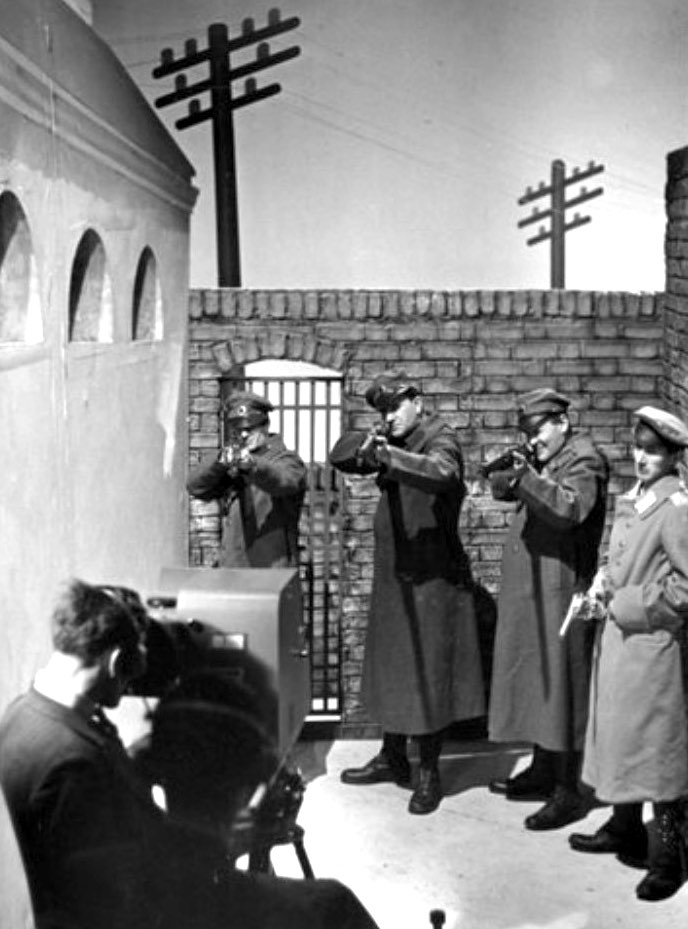OTD in early British television: 4 March 1939

John Wyver writes: Having celebrated yesterday, with the post on Teresa Deevey’s The King of Spain’s Daughter, the breadth of the television drama produced at AP before the war, here is a recognition of how formally innovative it could also be.
First shown on Saturday 4 March 1939, Condemned to be Shot was billed as ‘a play in the first person’ by R.E.J. Brooke (presumably actor Reginald Brooke, playing ‘An officer’), with Jan Bussell as the producer.
At the start, an announcer informed viewers that the short play ‘is in the nature of a new experiment in dramatic production by television. Viewers will be invited by the chief character to put themselves in his place.’
In a Radio Times preview, ‘The Scanner’ dialled up the hype:
For the first time the television camera will be one of the characters, the central figure of the play. You will hear a ‘voice off’, but the owner of the voice is invisible from the opening scene to the end, where he faces the raised rifles of a firing squad.
You will, in fact, see the television camera court martialled and riddled with bullets. Thus you as a viewer, looking at the screen of your set, will have the horrific experience of being condemned to be shot.
I recommend you to see it because almost every line tells you that it has been written specially for television.
Fortunately, the script survives on microfiche at the BBC Written Archives Centre. We are in Russia, being addressed by a White Army officer, who is on trial after the 1917 Revolution. He invites us to experience his courtroom examination as he witnessed it, and for the remainder of the 20-minute drama, everything is presented by a single camera from his point of view.
Found guilty, he, the camera and we as viewers, are taken into an adjacent courtyard. As the script direction reads,
The camera tracks back a foot and looks straight ahead. There are soldiers with rifles in front of him.
As the firing squad raise their weapons (the scene is above), our character begins to say the Lord’s Prayer.
Fire!
The script continues: ‘As the volley comes the screen shows bright white and then vision is cut off.’ Cue caption: ‘The end’.
Use of this kind of subjective, point-of-view camera is especially associated with Hollywood films of the 1940s, in particular Lady in the Lake (1947),but it had been used in earlier films including Dr Jekyll and Mr Hyde (1931) and A Farewell to Arms (1932). Orson Welles scripted a point-of-view shot of a prisoner being led to his execution in the unrealised pre-Citizen Kane (1941) screenplay for Heart of Darkness.
Although mainstream broadcast history proposes that original inventive television drama begins in the mid-1950s, with the likes of the BBC’s Nineteen Eighty-Four (1984) and then in the anthology series Armchair Theatre from ABC after 1956, Condemned to be Shot demonstrates that there were formally distinctive and challenging productions from the earliest years.
Leave a Reply